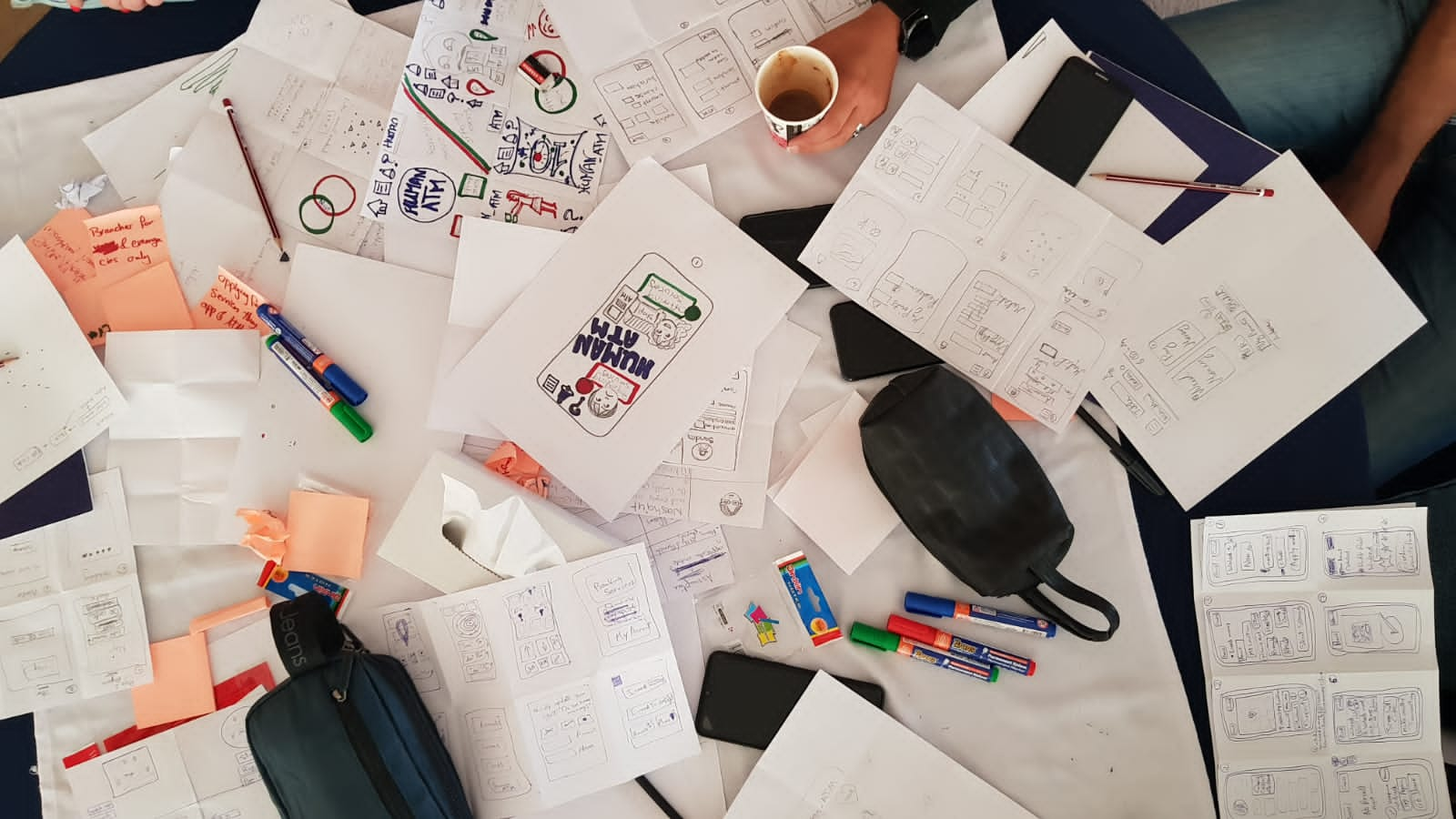The brutal truth about why your next “game-changing” product might be dead on arrival
The $2.3 Trillion Problem Nobody Wants to Talk About
Every quarter, boardrooms across the globe light up with excitement. New product presentations, sleek prototypes, and compelling market projections fill the air with optimism. Executives nod approvingly at beautifully crafted slides showcasing the next “revolutionary” digital solution.
Yet McKinsey’s latest research reveals a sobering reality: 73% of digital transformation initiatives fail to deliver expected value. Even more shocking? The average Fortune 500 company wastes $2.3 billion annually on products that miss the mark entirely.
What’s driving this epidemic of expensive failures? The answer lies in a phenomenon plaguing digital innovation teams worldwide: Digital Innovation Theater.
What Is Innovation Theater? (And Why Your Team Is Probably Guilty)
Innovation Theater is the corporate equivalent of shadow boxing—lots of impressive movement, zero real impact. It’s when organizations mistake internal validation for market truth, confusing motion with meaningful progress.
Here’s what Innovation Theater looks like in practice:
The Symptoms:
- Stakeholder workshops that generate hundreds of “brilliant” ideas
- Prototypes that wow internal teams but confuse actual users
- Market research that confirms what leadership wants to hear
- User personas created from assumptions, not real behavioral data
- Launch decisions based on internal enthusiasm rather than external validation
The Hidden Psychology: Digital Innovation Theater thrives because it feels productive. Teams are busy, deliverables are created, and everyone leaves meetings feeling accomplished. The problem? All this activity creates a dangerous illusion of progress while the real market remains a mystery.
The Brutal Reality: Internal Validation ≠ Market Truth
Consider this scenario: A fintech startup in Dubai spent 18 months building a “revolutionary” personal finance app. The internal team loved it. The UI was elegant, the features were comprehensive, and stakeholder demos went flawlessly.
Launch day arrived with fanfare. Six months later? 94% of users abandoned the app within the first week.
The post-mortem revealed a devastating truth: the target audience—young professionals in the UAE—didn’t want comprehensive financial management. They wanted instant, micro-moment solutions for specific pain points the team had never bothered to investigate.
This isn’t an isolated incident. Across industries, companies are building solutions to problems that exist primarily in conference rooms, not in real user contexts.
The Discovery Stage: Where Smart Teams Break the Illusion
The most successful digital teams understand a fundamental principle: the earlier you validate with real users, the less expensive your mistakes become.
The Discovery Stage isn’t about proving your idea is right—it’s about discovering what users actually need, how they currently solve problems, and where the genuine opportunities lie.
What Real Discovery Looks Like
1. User Journey Archaeology Instead of assuming user behavior, successful teams conduct deep ethnographic research. They observe how users currently navigate their problems, what workarounds they’ve created, and where genuine friction exists.
Example: A Saudi e-commerce platform discovered that their target audience wasn’t abandoning carts due to technical issues—they were waiting for family approval on purchases over certain amounts. This cultural insight completely changed their checkout flow design.
2. Problem-Solution Fit Before Product-Market Fit Most teams obsess over product-market fit while ignoring problem-solution fit. Discovery research reveals whether you’re solving a problem users actually experience and prioritize.
Key Questions Discovery Research Answers:
- What’s the user’s current journey for solving this problem?
- How much pain does this problem actually cause in their daily life?
- What solutions have they already tried and rejected?
- What would have to be true for them to change their current behavior?
- How do cultural, regional, or demographic factors influence their needs?
3. Behavioral Truth vs. Stated Preferences Users are notoriously unreliable narrators of their own behavior. Discovery research focuses on observing actual behavior rather than relying on self-reported preferences.
The Middle East Market: Where Cultural Context Makes or Breaks Digital Innovation
For companies launching in Saudi Arabia, the UAE, or expanding across the MENA region, Discovery research becomes even more critical. Cultural nuances, family dynamics, religious considerations, and local market conditions can invalidate assumptions made in Western markets.
Case Study: A European SaaS company assumed their productivity tool would translate seamlessly to UAE businesses. Discovery research revealed that their individual-focused features clashed with the collaborative, relationship-driven work culture prevalent in the region. The team pivoted to emphasize team coordination and relationship management features—resulting in 340% higher adoption rates.
The European and US Scaling Challenge
Companies expanding from MENA to Europe and the US face the reverse challenge: solutions that work brilliantly in relationship-driven markets often feel impersonal and cold in efficiency-focused Western markets.
Discovery Research for Global Scaling:
- Behavioral Segmentation: How do user behaviors differ across regions?
- Cultural Adaptation Needs: What features need localization beyond language?
- Competitive Landscape Analysis: What solutions already exist in target markets?
- Regulatory and Compliance Factors: What constraints shape user behavior?
The Digital Innovation Theater Antidote: A Discovery Research Framework
Phase 1: Problem Space Investigation (Weeks 1-2)
- Stakeholder Alignment Interviews: What assumptions are driving this project?
- Market Context Research: What solutions currently exist? Why do users choose them?
- Competitive Behavior Analysis: How are successful competitors positioning their solutions?
Phase 2: User Reality Mapping (Weeks 3-4)
- In-Context User Interviews: Observe users in their natural environment
- Journey Pain Point Analysis: Where does genuine friction occur?
- Jobs-to-be-Done Research: What outcome are users actually hiring solutions to achieve
Phase 3: Opportunity Validation (Weeks 5-6)
- Solution Concept Testing: Present multiple approaches, observe reactions
- Behavioral Intention Mapping: What would motivate users to change current behavior?
- Cultural and Regional Adaptation Assessment: How do needs vary across target markets?
The ROI of Getting Discovery Right
Companies that invest in proper Discovery research see measurable returns:
- 67% reduction in post-launch feature pivots
- 45% faster time-to-market (due to reduced iteration cycles)
- 89% higher user retention in the first 90 days
- 156% better product-market fit scores
More importantly, teams that complete thorough Discovery work report significantly higher confidence in their launch decisions and clearer roadmaps for iteration.
Red Flags: When You’re Stuck in Innovation Theater
Warning Signs Your Team Needs Discovery Research:
- Most of your user insights come from internal stakeholders
- Your target audience is defined by demographics rather than behaviors
- You can’t explain why users would switch from their current solution
- Your competitive analysis focuses on features rather than user motivations
- Launch timelines are set before user validation is complete
Breaking Free: From Theater to Truth
The transition from digital Innovation Theater to genuine user insight requires courage. It means accepting that your initial assumptions might be wrong, that beautiful prototypes might need fundamental changes, and that the timeline might shift based on what you learn.
But here’s the counterintuitive truth: teams that embrace Discovery research actually move faster to successful outcomes because they avoid the expensive cycle of build-launch-fail-pivot that plagues assumption-driven development.
The webkeyz Approach: Discovery Research That Drives Results
At webkeyz, we’ve seen too many brilliant teams fall into the Innovation Theater trap. Our Discovery research methodology focuses on uncovering behavioral truth rather than confirming internal assumptions.
Our Discovery Process:
- Cultural Context Analysis: Understanding regional and cultural factors that influence user behavior
- Behavioral Journey Mapping: Observing actual user workflows and pain points
- Opportunity Sizing: Quantifying the real market potential based on observed behavior
- Solution Architecture: Designing solutions that align with genuine user needs and constraints
Whether you’re launching innovative solutions in the Saudi Arabia and UAE markets or scaling proven products to Europe and the US, Discovery research ensures you’re building something users actually need.
Ready to Move Beyond Innovation Theater?
The next stage in our UX Research Roadmap reveals how to stress-test your solutions before development begins—because prototypes aren’t made to impress stakeholders, they’re made to be broken by real users.
Want to dive deeper into Discovery research methodologies? Download our complete UX Research Roadmap guide, or schedule a consultation to discuss how Discovery research can de-risk your next digital innovation project.
Follow webkeyz for insights on turning user research into business impact—one stage at a time.
Until next time explore webkeyz’s case studies
and Keep Thinking!








